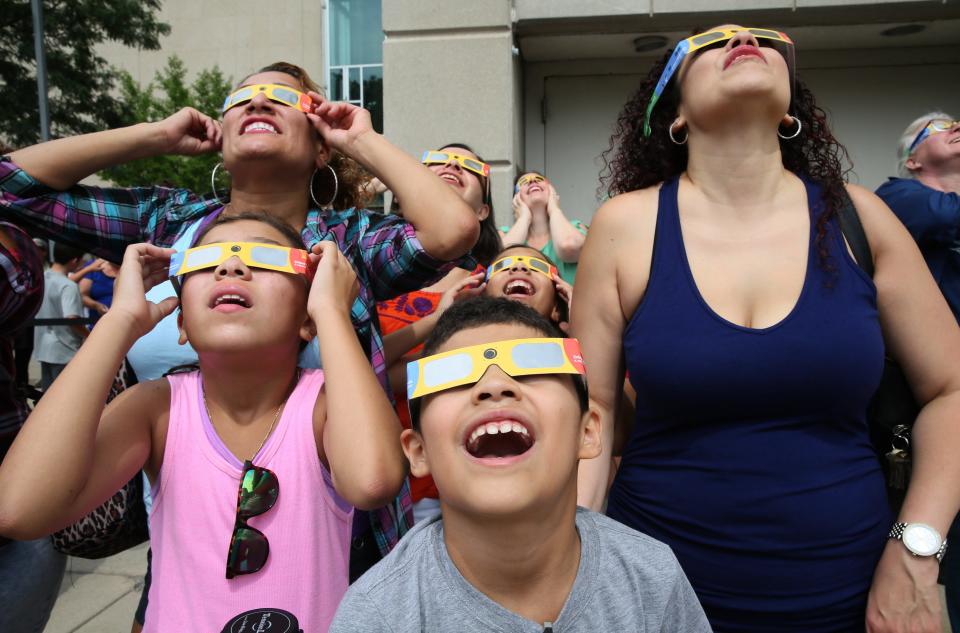Solar eclipse shows just how amazing and vast our universe is
- Oops!Something went wrong.Please try again later.
Kansas won't see a total solar eclipse on Monday, but we’ll get pretty close here in our home on the range.
The Topeka Capital-Journal’s Tim Hrenchir reports at the peak of that afternoon's eclipse — which will reach totality in states that include nearby Oklahoma and Missouri — people in Topeka will see 87.2% of the sun obscured. Those in Wichita will see 87.7% of an eclipse and those in Kansas City, Missouri, will see it obscured 87.2%.
We have a tool on our website that can help you see the conditions of the eclipse in your area. Be sure to check it out.
We know that plenty of Kansans might consider visiting our neighbors in Oklahoma and Missouri to get a view of the eclipse inside the path of totality. We hope your travels outside the Sunflower State are safe and enjoyable. Please be mindful that highways will be crowded with many other spectators.
We want you to return safely and we want to hear about your experience.
The Capital-Journal’s Stacey Saldanha-Olson reports there are plenty of opportunities for Kansans to view the eclipse — even if not in full totality. Among them include Papan’s Landing Senior Center, 619 N.W. Paramore St., in Topeka; the marching band tarmac west of the Dole Institute at the University of Kansas in Lawrence; and the Flint Hills Discovery Center in Manhattan; are each hosting events.

Remember if you choose to watch the solar eclipse, use approved solar viewing glasses (also known as "eclipse glasses") or a handheld solar viewer. Regular sunglasses, no matter how dark, aren't safe for viewing the eclipse, NASA says.
The Monday solar eclipse will be the first in the U.S. since 2017 and the last until 2044 when only North Dakota, South Dakota and Montana will see the total eclipse.
We know the science behind the eclipse. We know when it’ll happen and when the next one will be.
Yet somehow it’s still a strangely mystifying experience. It shows us how small in the world we are. How big our universe actually is and how beautiful and amazing as well.
We hope everyone takes time to appreciate this rare moment.
Go outside and look skyward — with proper glasses of course. We won’t get another for two decades.
In the stillness of the eclipse, ponder things big and small. Think about how your actions can impact others. Are you radiating light or casting a shadow?
This article originally appeared on Topeka Capital-Journal: Solar eclipse shows just how amazing and vast our universe is

